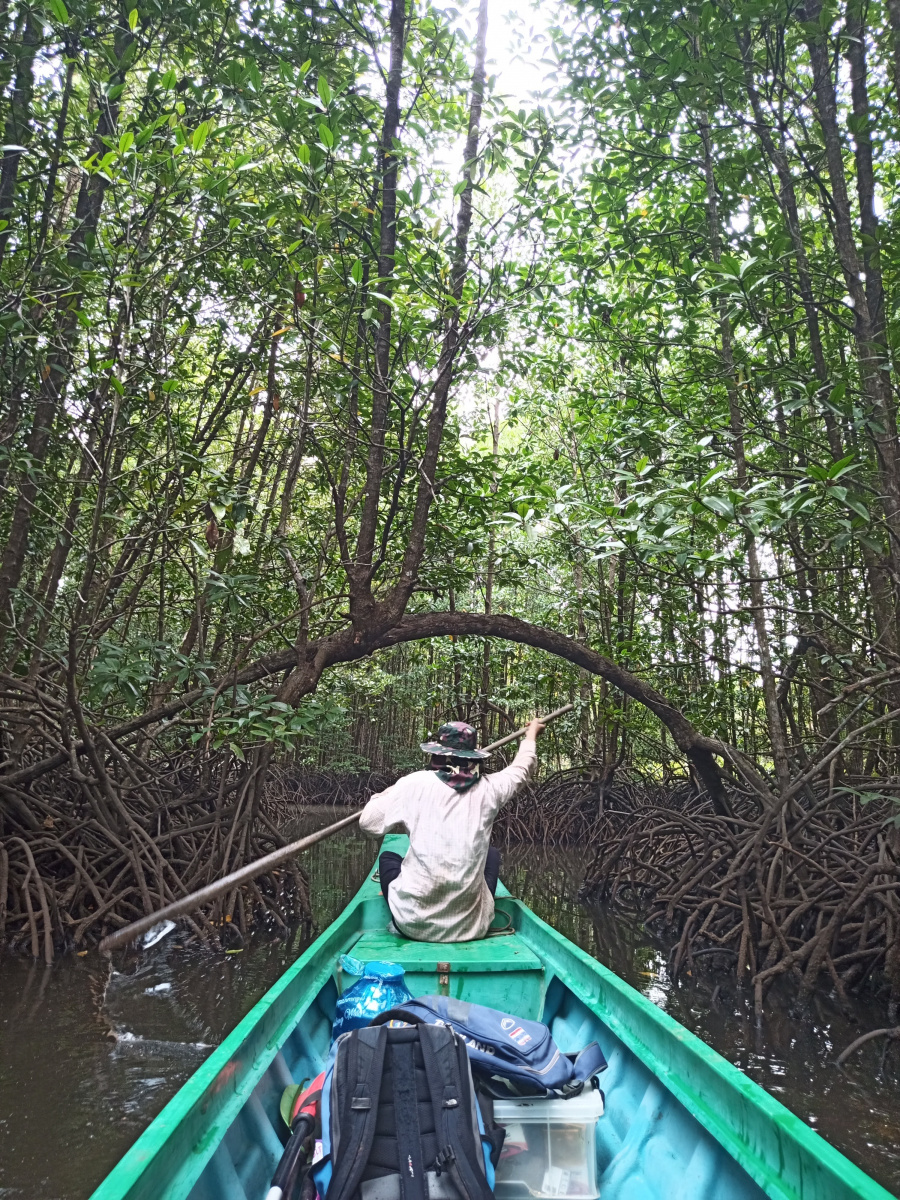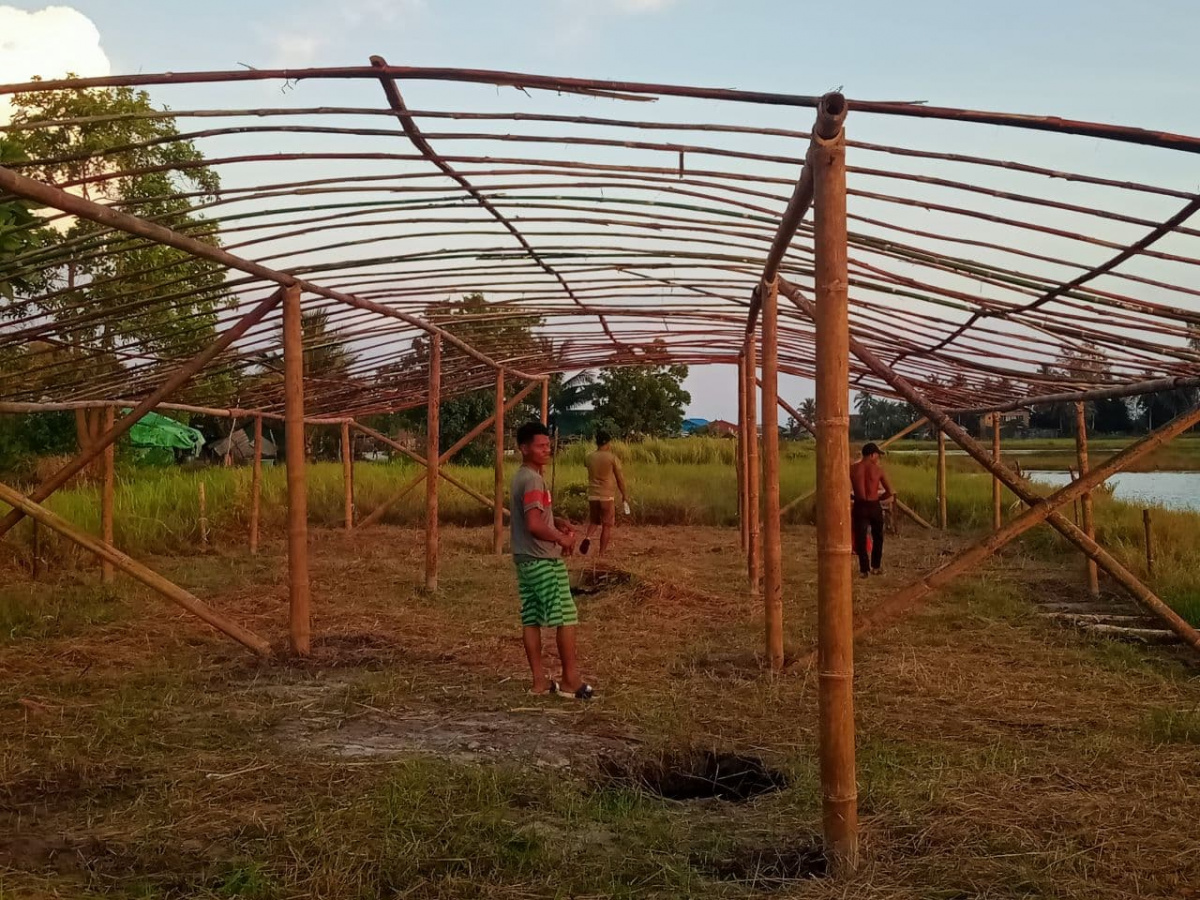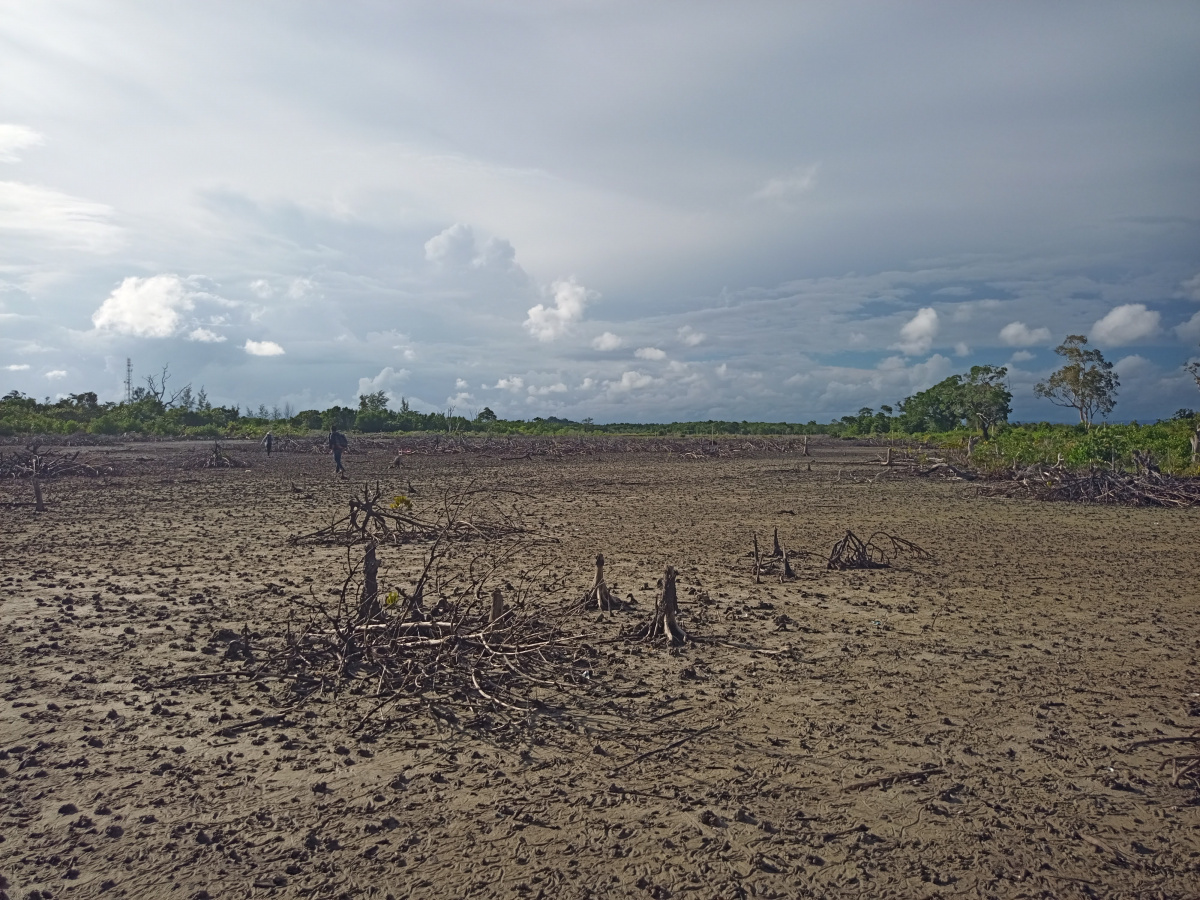Strengthening climate change resilience in Koh Kapik Ramsar Site through mangrove habitat restoration
Throughout 2021, the Fishing Cat Ecological Enterprise (FCEE) worked with community members and government stakeholders in Koh Kapik Ramsar Site, Cambodia, to implement climate change adaptation measures to strengthen the wetland’s resilience to climate change. FCEE conducted field research to identify potential restoration areas and determine plant species diversity within different habitats, built a plant nursery, selected restoration sites with stakeholders, started drafting restoration guidelines and joined testing and implementation of the Mangrove Restoration Tracking Tool (MRTT) developed by the Global Mangrove Alliance.
Supported by a grant from IUCN’s Mekong WET project, FCEE worked with local stakeholders to begin restoring the mangrove forest, as a Nature-based Solution for climate change. The measures were developed based on the results of the climate change vulnerability assessment, conducted by IUCN, with support from FCEE in 2017-2019.
Throughout the process, FCEE worked with partners to select a site for nursery construction, and engaged community members to sustainably harvest local bamboo to build the nursery. The plant nursery will be used to grow a high diversity of trees and other plants identified as representative of the biodiversity of the different habitats found in KKRS, including pure and mixed mangrove, beach, swamp and catchment forest habitats.
Det Song, Botany Specialist of the FCEE team conducted research on these habitats aimed to describe plant biodiversity. Det stated that, “KKRS holds some areas of impressively high plant biodiversity, particularly within mixed mangrove habitats and provides an excellent representation of the mangrove ecosystems that are rapidly being lost in the Indochina Mangrove Ecoregion. Our research ensures that such high biodiversity is well represented and appropriately recovered through carefully planned restoration actions.”
The team then convened multi-stakeholder consultations to coordinate plans for plant nursery activities, select 3 -5 restoration sites covering between 600 to 800 hectares in total, and plan further climate change adaptation activities, such as participatory management of fisheries and seagrass conservation areas.
FCEE also continued to monitor threatened species through camera-trapping and joined an initiative from the Global Mangrove Alliance to review, refine and test a new Mangrove Restoration Tracking Tool (MRTT). The MRTT is designed to track numerous social and ecological indicators that determine success of a restoration project. The tool provides a monitoring and evaluation baseline to establish initial project conditions and follow up on the social and ecological benefits brought about by mangrove restoration projects as well as a gateway for technical support by expert partners from the Global Mangrove Alliance.
During the project period, Koh Kapik experienced severe Covid outbreaks, prompting closure to outsiders and the suspension of in-person meetings. Despite these limitations, FCEE worked with local stakeholders, building on its five-year presence in KKRS to enable work to continue even when direct community work was not possible. “Thanks to our close relationship with local stakeholders in KKRS, we were able to coordinate online, draw up plans together and start building the plant nursery for habitat restoration in Koh Kapik village despite the difficulties imposed by Covid-19 restrictions,” said Det.
Koh Kapik Ramsar Site (KKRS) is located in southwest Cambodia. The site overlaps Peam Krasop Wildlife Sanctuary (PKWS), and contains some of Southeast Asia’s largest and densest mangrove forests. These mangrove forests are strongholds for threatened species, including the vulnerable fishing cat Prionailurus viverrinus and the world’s rarest otter species, the hairy-nosed otter Lutra sumatrana. KKRS also provides essential ecosystem services and livelihood opportunities for local communities, including fishing, crabbing and the collection of non-timber forest products. Despite efforts to recover important habitats lost to overexploitation of natural resources, threats to the ecosystem persist, especially land clearing and illegal demarcation. These threats together with increases in temperature, precipitation and extreme weather events associated with climate change are accelerating ecosystem degradation.
The current project builds on others conducted by FCEE within PKWS/KKRS since 2017 and is connected to two other projects, which will extend activities into the future, ensuring continuity of climate change adaptation actions.
About MWET
Funded by the International Climate Initiative (IKI) of the German Federal Ministry for the Environment, Nature Conservation, Building and Nuclear Safety (BMUB), the “Mekong WET: Building Resilience of Wetlands in the Lower Mekong Region” project aims to build climate resilience by harnessing the benefits of wetlands in Cambodia, Lao PDR, Thailand, and Viet Nam.
Mekong WET will help the four countries to address their commitments to the Ramsar Convention, an international treaty for the conservation and sustainable use of wetlands, and to achieve the Aichi Biodiversity Targets.
About IBRRI
The Indo-Burma Ramsar Regional Initiative (IBRRI) was jointly developed by the Ramsar National Focal Points of the five countries (Cambodia, Lao PDR, Myanmar, Thailand, and Viet Nam), and IUCN’s Asia Regional Office, based on specific needs identified in these countries. It was endorsed by the 52nd meeting of the Ramsar Convention Standing Committee in June 2016. The IBRRI aims to support the coordinated implementation of the objectives of the Strategic Plan of the Ramsar Convention. IUCN acts as the Secretariat for the Initiative under the leadership of the Steering Committee, which includes representatives from the five governments and the Ramsar Convention Secretariat as an observer.







